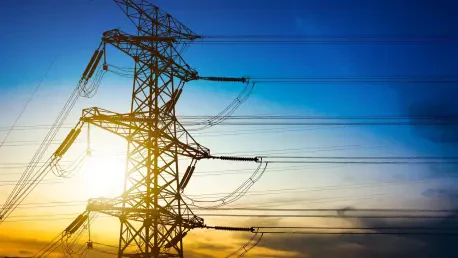I’m thrilled to sit down with Donald Gainsborough, a political savant and leader in policy and legislation, who heads Government Curated. With his deep expertise in navigating the complex intersection of energy infrastructure, emerging technologies like AI, and the policy frameworks driving change, Donald is uniquely positioned to shed light on the U.S. electricity grid’s transformation. Today, we’ll explore the critical challenges facing the grid, the unprecedented demand fueled by AI, the urgent need for modernization, the role of government incentives, and the investment opportunities emerging from this revolution.
Can you walk us through why the U.S. electricity grid is facing such a critical moment right now?
Absolutely, Ethan. The U.S. grid is at a breaking point due to a combination of aging infrastructure and skyrocketing demand. Much of our transmission system was built for a different era, designed to handle predictable, steady loads from the 20th century. Now, we’re seeing an unprecedented surge in electricity needs, largely driven by AI and data centers, while the grid itself hasn’t kept pace. Without significant upgrades, we risk widespread reliability issues, higher energy costs, and even stalling technological progress.
How is the massive growth in AI-driven data centers specifically straining the grid?
The numbers are staggering. Data centers, especially those powering AI applications, are incredibly energy-intensive due to the computational power required. The International Energy Agency projects that by 2030, these centers could account for 9% of U.S. electricity generation, more than doubling from just a few years ago. This isn’t just a minor uptick—it’s a seismic shift that the current grid, with its limited capacity and slow expansion timelines, simply isn’t equipped to handle without major intervention.
What are some real-world examples of how the outdated grid is struggling to meet today’s demands?
One glaring example is in Northern Virginia, a hub for data centers. Operators there are facing wait times of up to seven years just to get new power connections. That’s forcing them to rely on temporary, expensive fixes like portable gas-fired generators. It’s a clear sign that our transmission lines and interconnection processes are bottlenecks, unable to scale fast enough for the digital economy’s needs.
How significant is the investment needed to modernize the grid, and where should those funds be prioritized?
The Department of Energy estimates that we need around $500 billion to overhaul the grid. That’s a massive figure, but it’s necessary to expand generation capacity, upgrade transmission lines, and invest in technologies like energy storage and water-cooling systems for data centers. Prioritizing transmission infrastructure is key—without it, we can’t move power efficiently to where it’s needed most. Additionally, funding smart grid technologies can help optimize existing capacity without always needing to build from scratch.
How are policies like the Inflation Reduction Act supporting this energy transformation?
The Inflation Reduction Act, along with the Infrastructure Investment and Jobs Act, is a game-changer. The IRA, for instance, offers a 30% Investment Tax Credit and production credits for clean energy projects, which incentivize private sector innovation. It also introduces tools like tax credit monetization, allowing even non-taxable entities to participate. These policies lower financial barriers and speed up deployment of solutions critical to grid modernization and the clean energy transition.
What role do you see new technologies playing in making the grid more efficient and resilient?
Technology is the linchpin here. Innovations like non-contact sensors for real-time monitoring of transmission lines can boost capacity without costly outages. Energy storage systems, including advanced batteries, help balance supply and demand, especially with intermittent renewable sources. Even IoT-based systems for optimizing energy use in buildings are making a dent. These tools collectively reduce strain on the grid and pave the way for a more flexible, decentralized energy future.
How can investors capitalize on the growing demand for grid modernization and energy storage?
Investors have a golden opportunity in this space. Companies focusing on energy storage, decentralized power solutions, and grid analytics are well-positioned to thrive. Think about firms developing industrial-scale storage or mobile solar appliances—these address immediate grid strain while aligning with long-term sustainability goals. Diversifying across sectors and targeting companies that benefit from policy incentives, like those under the IRA, can help mitigate risks while tapping into a $500 billion market.
What’s your forecast for the future of the U.S. electricity grid over the next decade?
I’m cautiously optimistic. Over the next ten years, I believe we’ll see a transformed grid if investment and policy momentum continue. AI-driven demand will push us to innovate faster, integrating more renewables and storage while overhauling transmission. However, challenges like supply chain issues and permitting delays could slow us down. If we can balance urgency with strategic planning, the grid won’t just support the AI economy—it’ll redefine how we think about energy resilience and sustainability.









